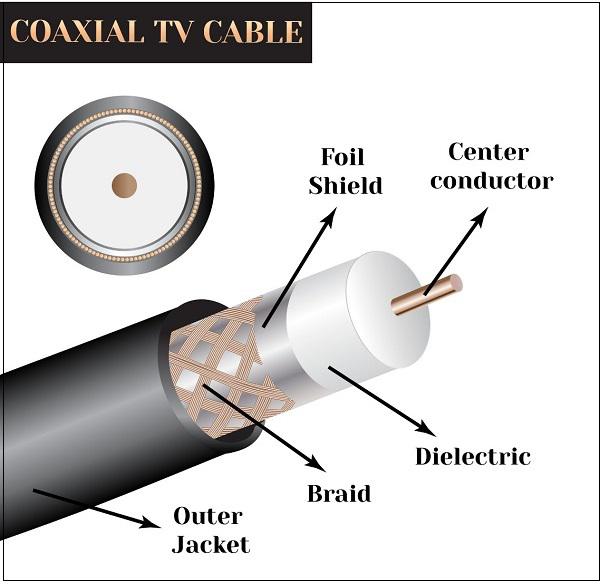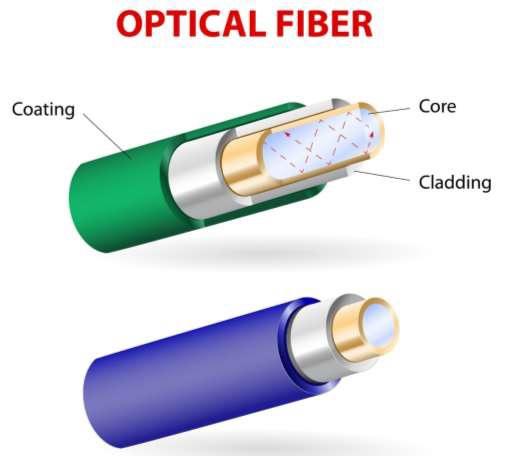Transmission Media
For any networking to be effective, raw stream of data is to be transported from one device to other over some medium. Various transmission media can be used for transfer of data. These transmission media may be of two types −
Guided − In guided media, transmitted data travels through cabling system that has a fixed path. For example, copper wires, fibre optic wires, etc.
Unguided − In unguided media, transmitted data travels through free space in form of electromagnetic signal. For example, radio waves, lasers, etc.
Each transmission media has its own advantages and disadvantages in terms of bandwidth, speed, delay, cost per bit, ease of installation and maintenance, etc. Let’s discuss some of the most commonly used media in detail.
Twisted Pair Cable
Copper wires are the most common wires used for transmitting signals because of good performance at low costs. They are most commonly used in telephone lines. However, if two or more wires are lying together, they can interfere with each other’s signals. To reduce this electromagnetic interference, pair of copper wires are twisted together in helical shape like a DNA molecule. Such twisted copper wires are called twisted pair. To reduce interference between nearby twisted pairs, the twist rates are different for each pair.

Up to 25 twisted pair are put together in a protective covering to form twisted pair cables that are the backbone of telephone systems and Ethernet networks.
Advantages of twisted pair cable
Twisted pair cable are the oldest and most popular cables all over the world. This is due to the many advantages that they offer −
- Trained personnel easily available due to shallow learning curve
- Can be used for both analog and digital transmissions
- Least expensive for short distances
- Entire network does not go down if a part of network is damaged
Disadvantages of twisted pair cable
With its many advantages, twisted pair cables offer some disadvantages too −
- Signal cannot travel long distances without repeaters
- High error rate for distances greater than 100m
- Very thin and hence breaks easily
- Not suitable for broadband connections
Shielding twisted pair cable
To counter the tendency of twisted pair cables to pick up noise signals, wires are shielded in the following three ways −
- Each twisted pair is shielded.
- Set of multiple twisted pairs in the cable is shielded.
- Each twisted pair and then all the pairs are shielded.
Such twisted pairs are called shielded twisted pair (STP) cables. The wires that are not shielded but simply bundled together in a protective sheath are called unshielded twisted pair (UTP) cables. These cables can have maximum length of 100 metres.
Shielding makes the cable bulky, so UTP are more popular than STP. UTP cables are used as the last mile network connection in homes and offices.
Coaxial Cable
Coaxial cables are copper cables with better shielding than twisted pair cables, so that transmitted signals may travel longer distances at higher speeds. A coaxial cable consists of these layers, starting from the innermost −
Stiff copper wire as core
Insulating material surrounding the core
Closely woven braided mesh of conducting material surrounding the insulator
Protective plastic sheath encasing the wire
Coaxial cables are widely used for cable TV connections and LANs.

Advantages of Coaxial Cables
These are the advantages of coaxial cables −
Excellent noise immunity
Signals can travel longer distances at higher speeds, e.g. 1 to 2 Gbps for 1 Km cable
Can be used for both analog and digital signals
Inexpensive as compared to fibre optic cables
Easy to install and maintain
Disadvantages of Coaxial Cables
These are some of the disadvantages of coaxial cables −
- Expensive as compared to twisted pair cables
- Not compatible with twisted pair cables
Optical Fibre
Thin glass or plastic threads used to transmit data using light waves are called optical fibre. Light Emitting Diodes (LEDs) or Laser Diodes (LDs) emit light waves at the source, which is read by a detector at the other end. Optical fibre cable has a bundle of such threads or fibres bundled together in a protective covering. Each fibre is made up of these three layers, starting with the innermost layer −
Core made of high quality silica glass or plastic
Cladding made of high quality silica glass or plastic, with a lower refractive index than the core
Protective outer covering called buffer
Note that both core and cladding are made of similar material. However, as refractive index of the cladding is lower, any stray light wave trying to escape the core is reflected back due to total internal reflection.

Optical fibre is rapidly replacing copper wires in telephone lines, internet communication and even cable TV connections because transmitted data can travel very long distances without weakening. Single node fibre optic cable can have maximum segment length of 2 kms and bandwidth of up to 100 Mbps. Multi-node fibre optic cable can have maximum segment length of 100 kms and bandwidth up to 2 Gbps.
Advantages of Optical Fibre
Optical fibre is fast replacing copper wires because of these advantages that it offers −
- High bandwidth
- Immune to electromagnetic interference
- Suitable for industrial and noisy areas
- Signals carrying data can travel long distances without weakening
Disadvantages of Optical Fibre
Despite long segment lengths and high bandwidth, using optical fibre may not be a viable option for every one due to these disadvantages −
- Optical fibre cables are expensive
- Sophisticated technology required for manufacturing, installing and maintaining optical fibre cables
- Light waves are unidirectional, so two frequencies are required for full duplex transmission
Infrared
Low frequency infrared waves are used for very short distance communication like TV remote, wireless speakers, automatic doors, hand held devices etc. Infrared signals can propagate within a room but cannot penetrate walls. However, due to such short range, it is considered to be one of the most secure transmission modes.

Radio Wave
Transmission of data using radio frequencies is called radio-wave transmission. We all are familiar with radio channels that broadcast entertainment programs. Radio stations transmit radio waves using transmitters, which are received by the receiver installed in our devices.
Both transmitters and receivers use antennas to radiate or capture radio signals. These radio frequencies can also be used for direct voice communication within the allocated range. This range is usually 10 miles.

Advantages of Radio Wave
These are some of the advantages of radio wave transmissions −
- Inexpensive mode of information exchange
- No land needs to be acquired for laying cables
- Installation and maintenance of devices is cheap
Disadvantages of Radio Wave
These are some of the disadvantages of radio wave transmissions −
- Insecure communication medium
- Prone to weather changes like rain, thunderstorms, etc.







